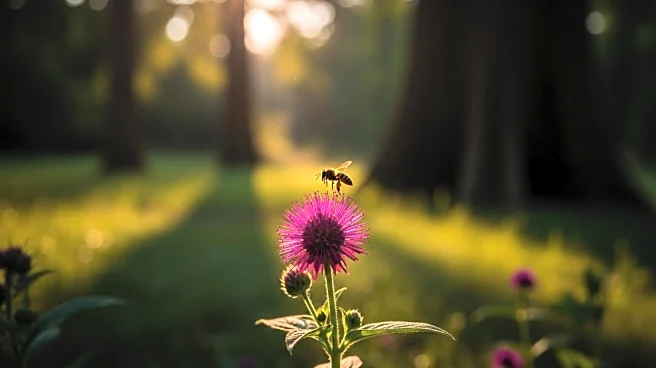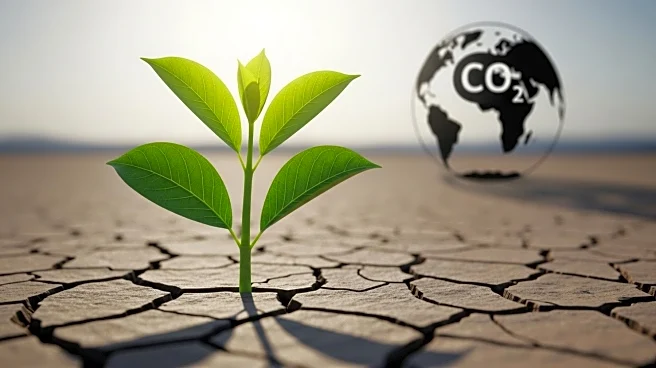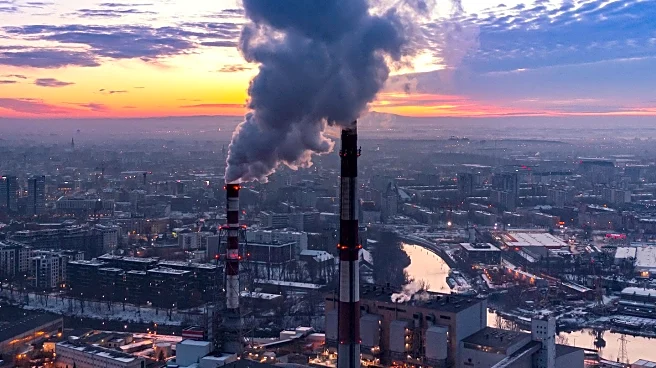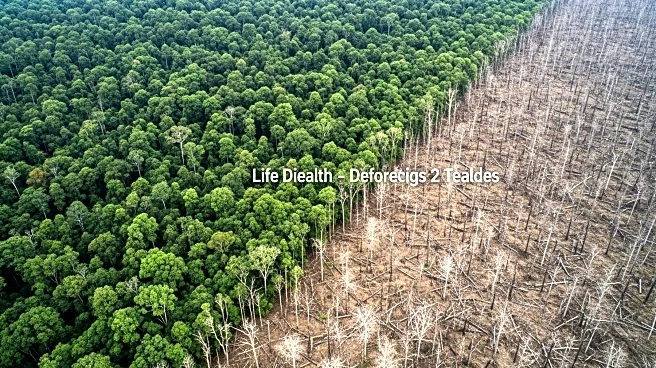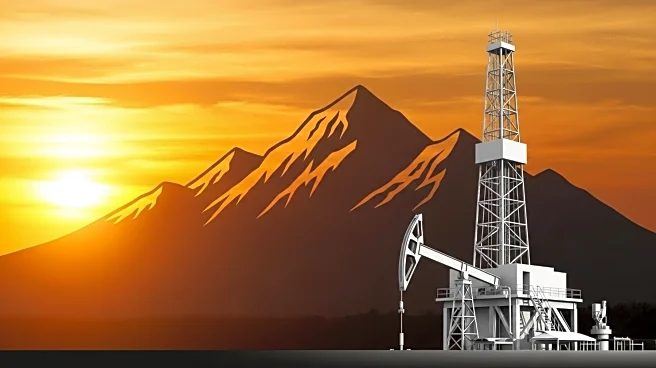What's Happening?
A recent study published in Paleobiology examines the effects of rapid global warming 56 million years ago on pollinators. During the Paleocene-Eocene Thermal Maximum, a significant amount of carbon was released into the atmosphere, causing Earth's temperature to rise by about 6°C over 5,000 years. This warming event led to the expansion of plants and their pollinators from dry tropical areas into new regions. Researchers analyzed fossil pollen from the Bighorn Basin in Wyoming, revealing that animal pollination became more prevalent while wind pollination decreased. The study suggests that pollinators adapted to the changing climate by moving with the plants they pollinated, aiding the establishment of new plant communities.
Why It's Important?
The study provides insights into how ecosystems might respond to current climate change. Despite the dramatic changes during the ancient warming event, most species and ecological interactions survived, suggesting resilience in ecosystems. This historical perspective highlights the importance of maintaining slow rates of environmental change to prevent extinctions. Understanding past climate events can inform strategies to mitigate the impacts of modern climate change, emphasizing the need for careful management of carbon emissions and ecosystem preservation.
